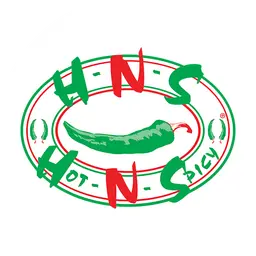The healthcare industry is often praised for its dedication to patient care, but behind the scenes, many organizations struggle with outdated systems and inefficient workflows. While inefficiencies may seem like minor inconveniences, they come with hidden costs that affect not just hospitals and clinics, but also patients and staff. In today’s competitive and patient-centered healthcare environment, overlooking workflow inefficiencies can drain financial resources, reduce the quality of care, and damage an organization’s reputation.
Below are ten hidden costs of inefficient healthcare workflows that every healthcare provider should recognize.
1. Increased Administrative Burden
One of the most overlooked costs of inefficient workflows is the administrative overload on staff. Manual documentation, redundant paperwork, and fragmented systems consume valuable time that could otherwise be spent on patient care. According to studies, healthcare professionals often spend almost half their workday on non-clinical tasks, creating frustration and lowering morale.
2. Higher Operational Expenses
Inefficiencies often force healthcare organizations to hire additional staff just to manage the same workload. Whether it’s billing, scheduling, or patient record-keeping, manual or outdated processes can double operational costs. Even small inefficiencies compound over time, eating into a hospital’s budget and lowering profitability.
3. Billing Errors and Revenue Leakage
When workflows lack automation, billing errors become common. Mistakes in coding, insurance verification, or claims submission result in delayed payments or outright rejections. This leads to revenue leakage, money that should be collected but isn’t. For many healthcare organizations, these small mistakes add up to millions in annual losses.
4. Delayed Patient Care
Slow workflows can directly impact patient outcomes. Long waiting times, misplaced test results, and poor coordination between departments often delay treatment. In critical cases, these inefficiencies can make the difference between life and death. Even in routine cases, delays reduce patient satisfaction and may push individuals to seek care elsewhere.
5. Staff Burnout and Turnover
Healthcare professionals already face demanding schedules, and inefficient systems only make matters worse. When doctors and nurses spend excessive time on repetitive administrative work, their stress levels rise. This leads to burnout, absenteeism, and high staff turnover, all of which come with significant recruitment and training costs for the organization.
6. Poor Patient Experience
Patients today expect quick, seamless, and digital-first healthcare experiences. Inefficient workflows that result in long queues, multiple follow-up visits, or repeated paperwork diminish patient trust. Poor experiences not only affect retention but also damage the reputation of the healthcare provider. Negative reviews spread quickly in the digital age, making it harder to attract new patients.
7. Compliance and Legal Risks
The healthcare sector is heavily regulated, and inefficient workflows can make it harder to maintain compliance. Missing documentation, incorrect patient records, or delayed reporting can expose organizations to fines, penalties, and lawsuits. A single compliance failure can cost a hospital not only financially but also in terms of credibility and trust.
8. Data Silos and Lost Insights
Outdated systems often create data silos where patient information is spread across multiple departments without integration. This fragmentation prevents healthcare providers from gaining a complete view of a patient’s history, which can lead to misdiagnoses, medication errors, and missed opportunities for preventive care. In the long term, the lack of accurate data hinders strategic decision-making and innovation.
9. Limited Scalability and Growth
When workflows are inefficient, scaling operations becomes nearly impossible. A clinic or hospital may struggle to handle more patients, expand services, or open new branches because the underlying systems cannot keep up. This hidden cost stifles growth, making it difficult for organizations to compete in a fast-evolving healthcare landscape.
10. Loss of Competitive Advantage
Finally, inefficient workflows erode a healthcare organization’s competitive edge. Competitors who adopt digital tools, automation, and streamlined processes deliver faster, better, and more cost-effective services. Over time, patients naturally gravitate toward providers that offer convenience and efficiency, leaving outdated organizations behind.
Conclusion
The hidden costs of inefficient healthcare workflows extend far beyond the obvious. From financial losses and staff burnout to compliance risks and diminished patient satisfaction, these inefficiencies have a ripple effect across the entire healthcare ecosystem. For organizations that want to thrive in today’s patient-centric market, investing in streamlined workflows and adopting the Best Clinic Management software Pakistan has to offer is no longer optional; it’s essential.
By addressing inefficiencies now, healthcare providers can reduce costs, improve care quality, boost staff morale, and ultimately build stronger relationships with patients. In a sector where every second and every decision matters, efficient workflows are the foundation of long-term success.


